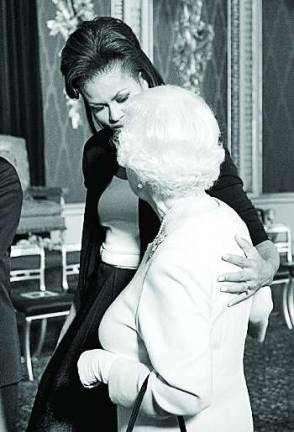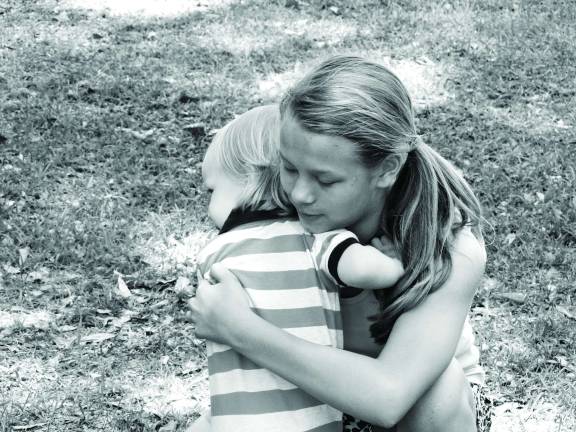Monday is National Hug Day


Michelle Obama shook up Buckingham Palace when her first meeting with Queen Elizabeth II began with a handshake and ended with a hug that got the British paparazzi hopping. Mrs. Obama made such an impression on the queen, that with a smile, she strayed from "protocol" and briefly wrapped an arm around the first lady. Mrs. Obama also wrapped her arm around Queen Elizabeth's shoulder and back. This exchange spawned a huge chain of controversy about touching the Queen.
Hugging can be controversial depending on the culture and acceptable etiquette, and to some, a hug can be construed as an invasion of personal space. Asian cultures are generally known to abstain from hugging. In other cultures, such as Latin American and Middle Eastern, hugging and touching occur far more frequently than in the United States.
January 21 is National Hug Day. Created by Reverend Kevin Zaborney, in 1986 in Caro, Michigan, it is officially recognized by the United States Copyright Office, but is not a public holiday. The date of January 21 was chosen because it marks a midpoint between Christmas and Valentines day, where people are figured to be at their emotional low.
Since it's founding, it has spread to several countries. There is only one way you are supposed to celebrate the holiday: offer a hug to anyone and everyone.
Kathleen Keating Schloessinger, RN, MA is a mental health educator, consultant and counselor in private practice and the author of "The Hug Therapy Book." In this book she perpetuates the significance of hugging as "an instinct, a natural response to feelings of affection, compassion, need and joy." She further calls hugging, "a science, a simple method of support, healing and growth with measurable and remarkable results." Additionally, she sees hugs as a form of art "in its highest form."
Studies have shown that human contact has many health benefits. It has been found that human contact improves both psychological and physical development. Hugging can also help build a good immune system, decrease the risk of heart disease, and decrease levels of the stress hormone cortisol in women. It has been shown that a couple who hugs for 20 seconds has higher levels of oxytocin, and that those who were in a loving relationship exhibited a highest increase.
According to the American Psychosomatic Society, a hug or 10 minutes of holding hands with a romantic partner can help reduce stress, and its harmful physical effects. Additionally, studies have shown that adults who had no contact with people had higher blood pressure and heart rate.
While National Hug Day and the Free Hugs Campaign share many similarities, there is no actual association between the two. Whether you hug a family member or a stranger, the mental and physical health benefits are the same.
The Free Hugs Campaign stemmed from the real life story of an Australian man known only by his pseudonym, "Juan Mann," whose sole mission was to reach out and hug a stranger to brighten his or her life. The Free Hugs Campaign web site says, "In this age of social dis-connectivity and lack of human contact, the effects of the Free Hugs campaign became phenomenal." The campaign became famous, internationally in 2006 as the result of a music video called "All the Same," on YouTube by the Australian band, Sick Puppies, which has been viewed more than 73 million times.
Both the Free Hugs Campaign and National Hug Day purvey an important message. As Keating Schloessinger wrote, "Touch is not only nice. It's needed. Scientific research supports the theory that stimulation by touch is absolutely necessary for our physical as well as our emotional well-being."
In a world where, now with Facebook, Tweeting, texting and e-mailing are an easy to be in contact without a physical presence, it's far too easy to lose that human touch.